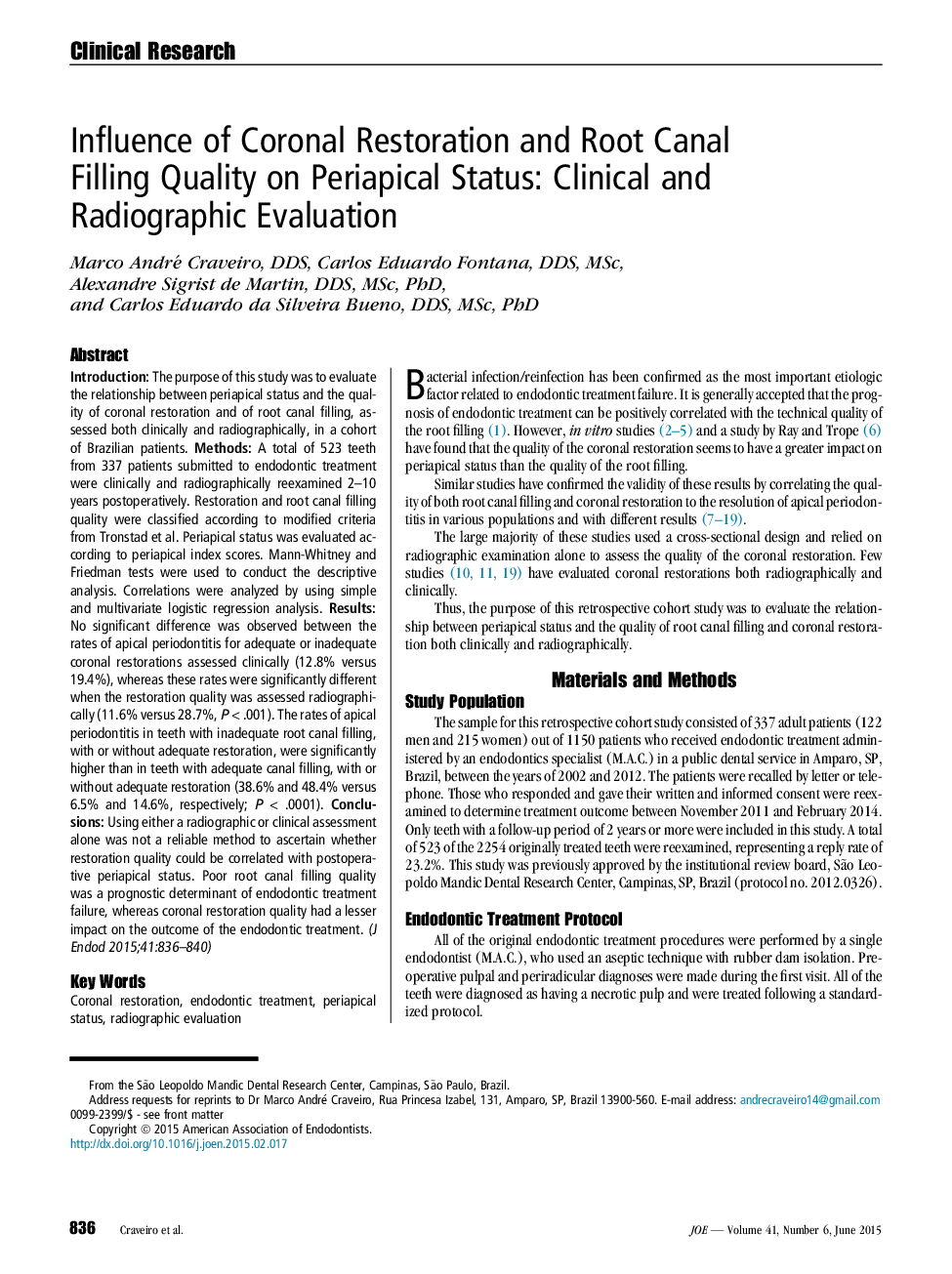| Article ID | Journal | Published Year | Pages | File Type |
|---|---|---|---|---|
| 3148171 | Journal of Endodontics | 2015 | 5 Pages |
IntroductionThe purpose of this study was to evaluate the relationship between periapical status and the quality of coronal restoration and of root canal filling, assessed both clinically and radiographically, in a cohort of Brazilian patients.MethodsA total of 523 teeth from 337 patients submitted to endodontic treatment were clinically and radiographically reexamined 2–10 years postoperatively. Restoration and root canal filling quality were classified according to modified criteria from Tronstad et al. Periapical status was evaluated according to periapical index scores. Mann-Whitney and Friedman tests were used to conduct the descriptive analysis. Correlations were analyzed by using simple and multivariate logistic regression analysis.ResultsNo significant difference was observed between the rates of apical periodontitis for adequate or inadequate coronal restorations assessed clinically (12.8% versus 19.4%), whereas these rates were significantly different when the restoration quality was assessed radiographically (11.6% versus 28.7%, P < .001). The rates of apical periodontitis in teeth with inadequate root canal filling, with or without adequate restoration, were significantly higher than in teeth with adequate canal filling, with or without adequate restoration (38.6% and 48.4% versus 6.5% and 14.6%, respectively; P < .0001).ConclusionsUsing either a radiographic or clinical assessment alone was not a reliable method to ascertain whether restoration quality could be correlated with postoperative periapical status. Poor root canal filling quality was a prognostic determinant of endodontic treatment failure, whereas coronal restoration quality had a lesser impact on the outcome of the endodontic treatment.
